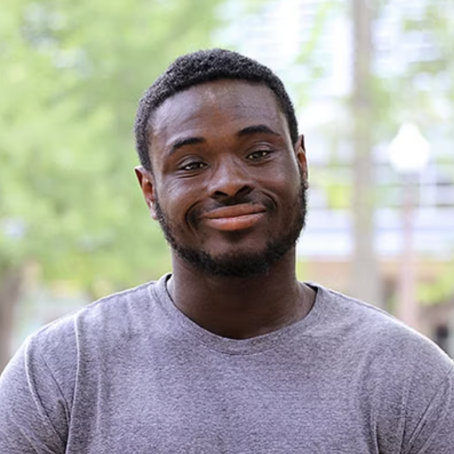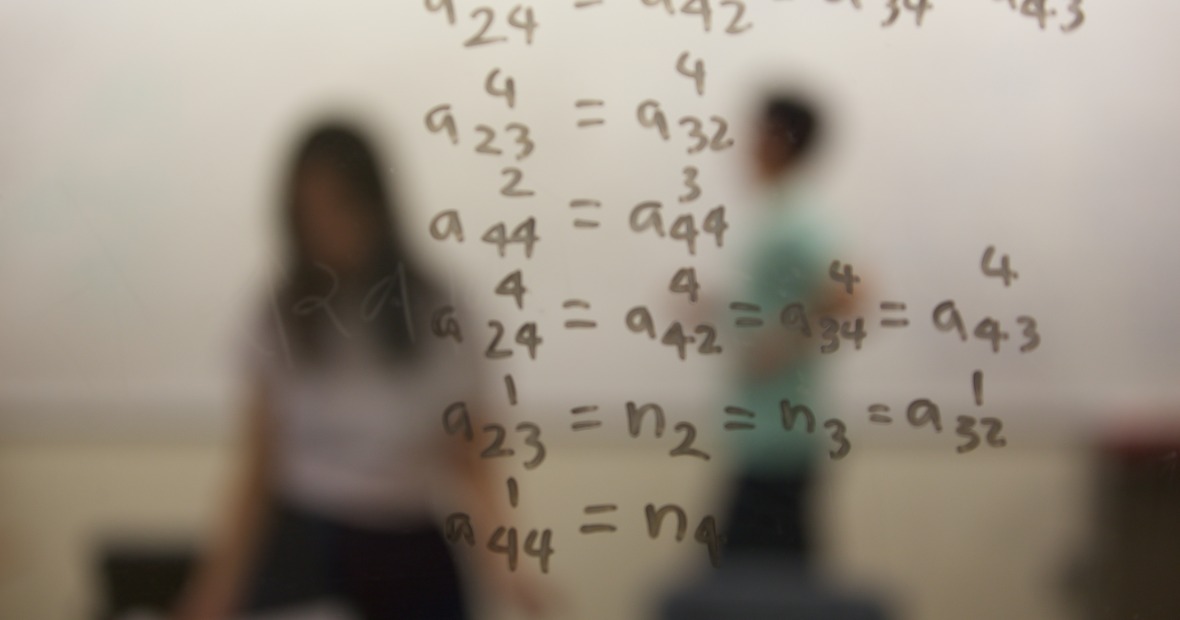3-2 Engineering Programs Give Grinnellians the Best of Both Worlds
How do you decide between the warmth and community of small-town Iowa or the diverse people, food, and events of a large city? Taking high-level engineering electives or exploring language, philosophy, and anthropology courses? With Grinnell’s 3-2 engineering programs, you won’t have to choose.
For highly motivated students wanting both a liberal arts and an engineering degree, Grinnell offers four 3-2 partnerships with Washington University in St. Louis, Columbia University, California Institute of Technology, and Rensselaer Polytechnic Institute. This unique, “best of both worlds” approach to an engineering education enables students to receive a B.A. from Grinnell as well as a B.S. from schools with top-tier engineering programs.
Receive a Solid Foundation
Clinton Sabah ’21 recently earned dual master’s degrees in energy, environmental, and chemical engineering and engineering management at Washington University’s McKelvey School of Engineering. The year before, he received his B.A. in chemistry from Grinnell and a B.S. in chemical engineering from McKelvey through Grinnell’s 3-2 partnership with Washington University.
Sabah credits the 3-2 program with giving him a more diverse education and college experience. “There are many things I learned while getting my liberal arts education that I wouldn't have been able to experience if I went straight to pursuing an engineering degree in a university, and vice versa.”
During three years on Grinnell’s campus, 3-2 students are expected to embrace the liberal arts curriculum. Students generally choose to pursue a science major while building an interdisciplinary education through courses in the humanities and social sciences, allowing them to build the strong creative thinking and communication skills — particularly writing, speaking, and collaboration — that Grinnell is known for.

Paul Tjossem is Grinnell’s 3-2 liaison officer and a professor of physics. Over the years, he’s advised many Grinnellians considering or pursuing dual degrees from Grinnell and an engineering school. “The 3-2 opportunity works best if you are a science major in a field that will have good overlap with the future engineering field,” he explains. “That is not to say a French major can’t do it … all majors can and should. But engineering schools don’t offer those humanities and social sciences courses, so you would have to complete your major requirements in three years at Grinnell.”
Typically, Grinnell 3-2 students complete most of their B.A. requirements in three years and then finish their Grinnell degree with a couple of courses taken at the engineering school. Rather than locking into an engineering specialization from their first year of college, 3-2 students have greater latitude to explore STEM disciplines. “I knew that I’d either want to major in chemistry, biochemistry, or physics and with this program, I could take any of those paths and still move on to any type of engineering I wanted to do,” Sabah says.
Take An Unbeatable Approach to Engineering
What makes the 3-2 program a better alternative to traditional undergraduate engineering degrees? The same pedagogical excellence that sets Grinnell apart from nearly every higher education institution in the nation benefits 3-2 students as well.
“The 3-2 program means that students receive phenomenal teaching from day one,” says Randy Stiles. Stiles worked closely with the 3-2 program during his five years leading the Office of Analytics and Institutional Research. For more than 20 years, he has served as a peer reviewer for undergraduate and graduate institutions offering dual degree programs across the country and continues to do accreditation site visits.
“There are no ‘weed-out’ classes at Grinnell,” Stiles explains. “In their first few years at Grinnell, students are going to receive world-class teaching, great support, and advising, and as a result develop an incredibly strong foundation in their technical education.” To truly grasp topics like physics, calculus, and differential equations — foundational engineering courses — you need good teaching, says Stiles. At Grinnell, you receive that.
Not only do Grinnellians on the 3-2 track benefit from the high-quality foundational education, but they also find that they are more well-rounded upon entering technical fields. “Students who go into engineering with a liberal arts background tend to be more articulate,” says Tjossem. “They are better able to work with others. I think that the 3-2 experience makes our students broader thinkers.”
And as the future of technical disciplines is shaped in ways yet unknown by artificial intelligence, 3-2 programs like Grinnell’s set students up to thrive. “What could better prepare you for whatever change lies ahead in the world of artificial intelligence than an interdisciplinary and well-balanced undergraduate education?” Stiles asks. The uncertain future of tech, he believes, is all the more reason to pursue the kind of education received at a liberal arts college.
Choosing the 3-2 Path
Students typically commit to a 3-2 program while in their third year at Grinnell, though the decision requires forethought. The feasibility of completing a dual degree program varies by academic major and by a student’s credit distribution. Admission to partner engineering schools isn’t guaranteed to Grinnell students (except for Washington University, provided students meet all program requirements).
“It ends up being very case by case,” Tjossem says of the 3-2 decision and application process. Some of his advisees become interested in an engineering degree late in their undergraduate experience, while others, like Sabah, chose to attend Grinnell specifically for the 3-2 program. “I decided that Grinnell would be the best option for me because I’d be able to pursue my interest in chemistry fully in a liberal arts environment as well as pursue an engineering degree later on at a university if I was still interested,” Sabah explains.
Three engineering degrees later, it’s clear he was still interested. For Sabah, as well as for the growing number of Grinnellians pursuing 3-2 programs, the result has been a truly one-of-a-kind engineering education.

